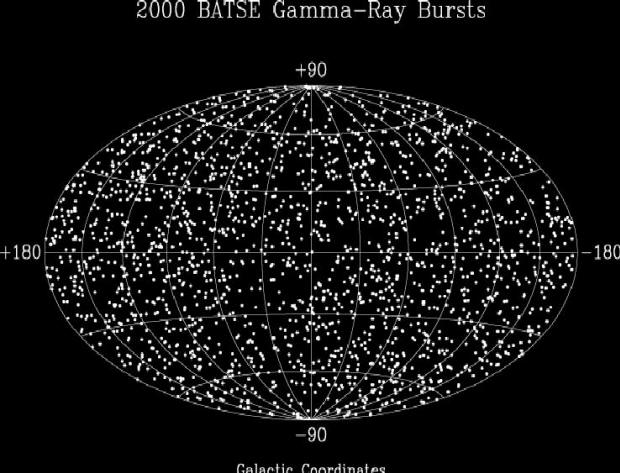In Space No One Can Hear You
Scream
Mar
26, 2009
Astronomers say that a gamma-ray
burst from the edge of the universe
signaled the birth of a black hole.Astrophysicists have described gamma-ray bursts (GRB) as the merging of neutron
stars or the high frequency light radiating from supernova explosions. Now,
according to a
recent paper published in the prestigious science journal Nature,
GRBs are said to be the "scream" from a black hole's birth.
The SWIFT satellite's
Burst Alert Telescope first saw GRB 080319 on March 19, 2008. The optical
component accompanying the beam of gamma radiation was so intense that it could
have been seen by anyone looking up at that exact point in the sky, even without
a telescope, despite calculations that indicate it was over 7 billion
light-years away!
Jonathan Grindlay, the Paine Professor of Astronomy at Harvard and current Chair
of the Harvard Department of Astronomy at the Harvard-Smithsonian Center for
Astrophysics, told reporters that this GRB is "the birth pangs of a black hole.
This is the scream." And, "[It is] more than halfway back to the Big Bang and
the origin of our universe."
The GRB happened 3 billion years before the solar system was formed, according
to conventional cosmological theories, because of the redshift equals time and
distance assumption. Since light requires a certain amount of travel time at its
299,792 kilometer-per-second speed, the longer it takes to arrive the farther
away and the farther back in time the source must be.
Extreme forms of supernovae are said to emit gamma-ray bursts. As
astrophysicists speculate, those same supernovae often occur in stars containing
many times the mass of our own Sun and cannot stop their collapse once their
fusion cores implode. Due to that inexorable plunge into an intense
gravitational field, it is theorized that the supernovae remnants form black
holes. Irrespective of the process, it is not known how a supernova explosion
and the subsequent collapse into a black hole generates a GRB.
The estimated size of a gamma-ray burst depends on its distance, as previously
stated. So, what does that mean for GRB measurements? The first few GRBs were
found in galaxies with high redshift – some seeming to emanate from as far away
as 12 billion light years. If the galaxies were actually that far away, the
energies observed in such gamma-ray flashes would be beyond any supernova, so a
hypothetical cosmic entity known as a hypernova was created, salvaging the
redshift-indicates-distance theory.
As Electric Universe cosmologists conclude, however, another explanation for GRB
intensity is that redshift is not actually an indicator of distance and GRBs are
occurring in nearby galactic neighborhoods. As
Mel Acheson proposed in his latest Picture of the Day, it is likely that
some galaxy clusters are not so far away, are not so large and are probably not
merging. In that same way, GRBs are not unimaginably powerful, not coming from
the edge of a speculative expanding space/time continuum, and are not the birth
pangs of a black hole.
If GRBs are located nearby they are less energetic and plasma discharges in the
form of exploding double layers could impel the gamma-ray bursts in ways that
can be explored though laboratory experiments. Rather than relying on
mathematical phantoms like black holes, neutron stars and hypernovae, why not
create real, testable hypotheses and work them up with real, physical models?
Standard cosmological theories are hard-pressed to match models with
observations. X-rays from ion excitation, a range of energy curves, and
(sometimes) gamma-rays are properties of lightning bolts. Computer simulations
demonstrate that plasma phenomena are scalable over several orders of magnitude
– they behave in the same way and illustrate basic premises whether in atoms or
galaxies. Perhaps GRBs are really flashes of cosmic lightning erupting from
electrified clouds of plasma on an immense scale.
By Stephen Smith







